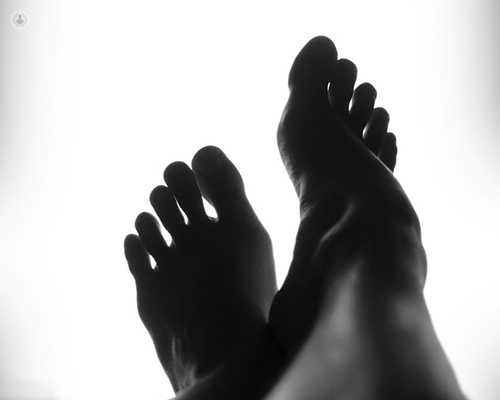Bunion surgery: what to expect afterwards
Autore:Bunion surgery is an operation that removes or realigns the bone that sticks out on your big toe. It is routinely carried out as a day procedure where patients walk out fully weight-bearing the same afternoon that they went in and most importantly: without pain. Here, one of our leading orthopaedic surgeons Mr Adam Ajis explains what you can expect following bunion surgery.

What are the different options for bunion surgery?
Bunion surgery has evolved rapidly even over the last five to ten years. Stories of plaster casts and lots of pain after surgery are now a thing of the past if you are with the right surgeon.
There are lots of different operations that can be done with bunion surgery. It is important that the patient and the surgeon work together to decide which is the best one. There are a few gimmicks out there, which simply aren’t true and can be easily spotted by unrealistic claims of speedy surgery or recovery.
Bunions are caused by a change in the shape of the bony structure of the foot. The only way to correct them is to make a carefully planned cut in the bone, move it back to the correct position and hold it there with small screws until it all heals up. The average bone takes six weeks to heal after a cut. This is a fact of nature and cannot be changed, but the long-term benefits are definitely worth it.
What types of bunion surgery do you offer to your patients?
In my practice, I offer minimally invasive bunion surgery as well as open surgery, performed under either general (asleep) or local (awake) anaesthesia. Each has its pros and cons and after a thorough consultation taking the patients views and expectations onboard, we come up with a plan together. It should be remembered that skin on the foot usually heals quite well and even with open surgery one would struggle to see the scar after twelve months.
How can I prepare for bunion surgery?
Deciding on a surgery date and planning ahead is essential to make things easy. You can get up to speed with household tasks; stock the fridge, pre-cook meals if necessary and do anything else that will make your life easier following the operation.
What happens after bunion surgery?
If you are with the right surgeon, you should be able to go home on the same day that you had the operation. A simple bandage and a special postoperative shoe are all that is needed.
The dressings and sutures are removed two weeks after surgery and by six weeks X-rays are done to check on the healing. It’s also at this point that comfortable footwear can be worn.
Will there be swelling and pain after bunion surgery?
Swelling is the body’s natural response to healing and repair. It is no cause for concern but it does need to be managed to avoid becoming a source of discomfort. During the first six weeks, the best way to speed up healing is to rest and elevate the foot. Keeping the toes moving whilst the foot is raised helps prevent stiffness and reduces swelling too.
Regarding pain, most patients tell me that they no longer need to take their painkillers three days post-operation, which leaves them feeling surprised, but the best results happen when you heed the advice.
What else can you advise after bunion surgery?
When it comes to driving, remember that if it is your right foot that had the bunion removed then you won’t be able to drive for six weeks but if it is your left foot then you can drive an automatic car for two weeks.
Return to work is variable and depends on the type of job but it can be as soon as two weeks for sedentary occupations with certain types of procedures. Your surgeon is also able to provide you with a certificate for work that advises how much time away is necessary.
There are lots of questions that patients don’t think to ask during their consultation with their doctor. Always make sure that you have a contact number or email address to get back in touch. This ensures that your concerns can be addressed and you can focus on being as relaxed and as comfortable as possible.
If you are considering bunion surgery, do not hesitate to book an appointment with Mr Ajis now and discuss your options.


